Argon40 teases the Raspberry Pi Compute Module 5 powered Argon One Up laptop (Updated)
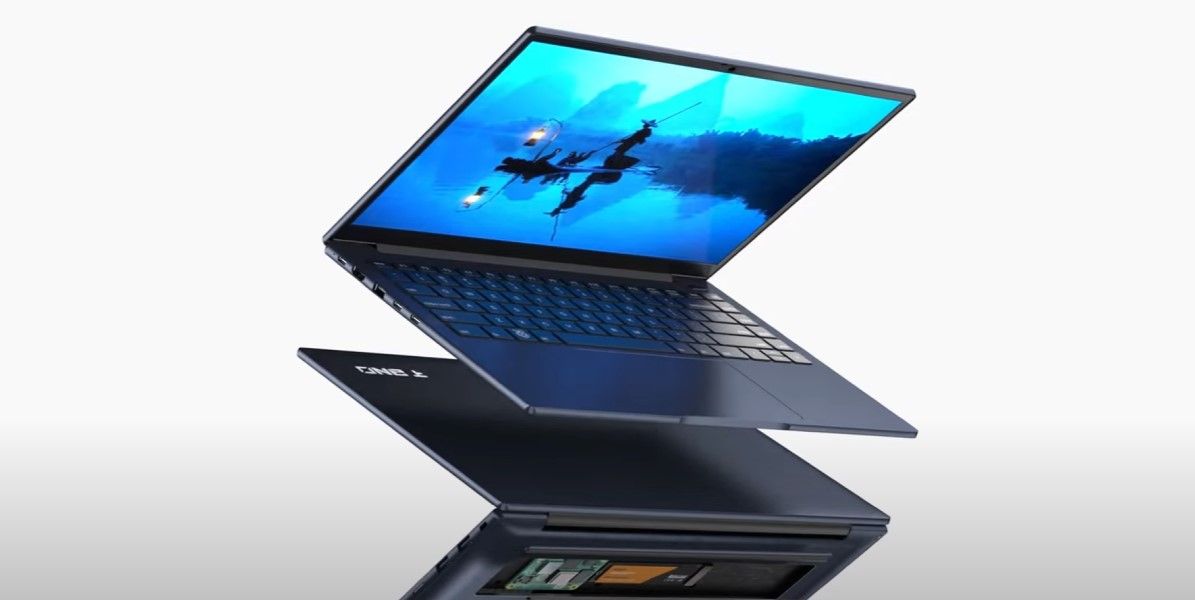
Update 3/10 06:11
The Argon One video has been updated and the new name appears to the the Argon One Up and we get an answer to the question "How do we access the GPIO?".
Why the change of name? We're not sure. The original name, Upton One, was an obvious homage to Raspberry Pi co-founder and CEO Eben Upton. The new name, Argon One Up, isn't too radical but the laptop itself is still a radical idea. We've kept the old name in the original article for reference.
Packing the Compute Module 5 into a laptop chassis is a good idea, but what about the Raspberry Pi's killer feature, the GPIO? Originally we couldn't see any means to access the GPIO, but in the latest video we can see an add on unit which connects to two USB Type C ports. "Custom GPIO Module via a modified USB-C port" according to the Kickstarter preview page. Looking at the pinout, this does look like a Raspberry Pi 40-pin GPIO, and not a Raspberry Pi Pico, connected between the laptop and the user's project.
The Kickstarter is still "coming soon" so expect more information as we get nearer.
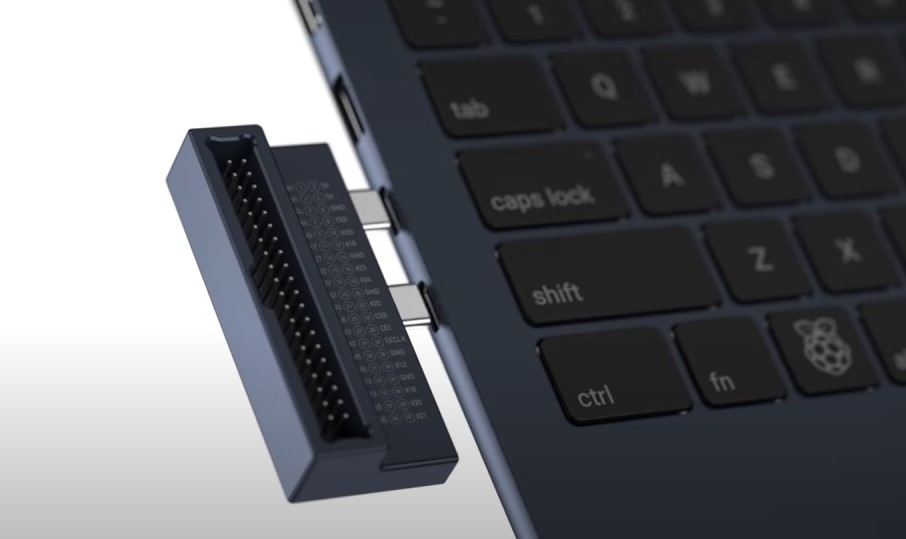
Original Article
Fresh from a post on the Argon40 forum which showed off the PCB for a new Argon40 Raspberry Pi Compute Module 5 powered laptop, we've seen the Kickstarter page and accompanying YouTube video for the rest of the computer. The Upton One, which is seemingly named after Raspberry Pi co-founder and CEO Eben Upton, is a sleek laptop with the power of the Compute Module 5. Using the Compute Module 5 means that users should be able to configure their laptop RAM and eMMC by swapping out the CM5 module. If Raspberry Pi continues to use the same dual 100-pin high-density connectors (like it did moving from the Compute Module 4 to 5) then we could upgrade the Upton One when the Compute Module 6 arrives. For all of us who enjoy hacking around with the GPIO, I've reached out to Argon40 to confirm how the GPIO will be broken out of the laptop. Previous Argon cases have broken out the full GPIO via a hatch, could it be the same here?
Get Tom's Hardware's best news and in-depth reviews, straight to your inbox.
So let's take a look around the Upton One and see what more information we can glean.
One second into the video and we can see the left hand side of the unit. Clearly visible is the stylized Upton One logo. There are three USB Type-C ports, a single HDMI port, and USB Type-A. So I was pretty close with my previous forensic analysis of the PCB. The case looks dark in color. In some shots, it appears grey, in others a dark navy blue. Case construction could either be aluminum or a form of heavy-duty plastic. Smart money is on aluminum as Argon40 has used it in its previous products.
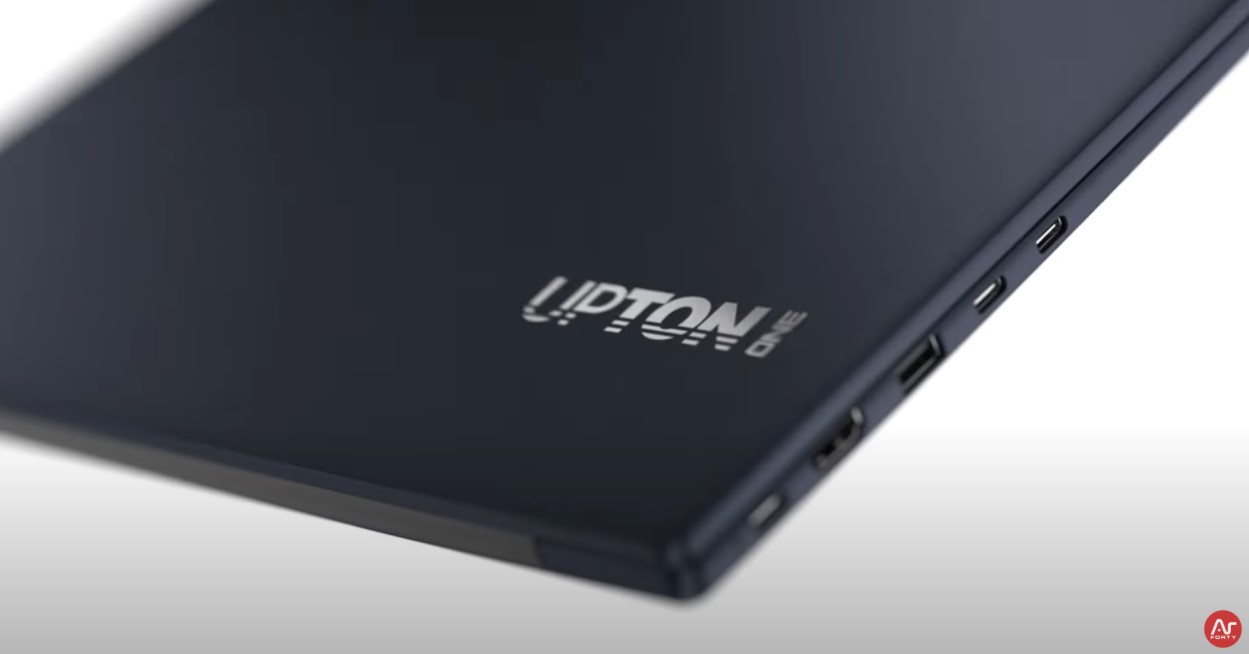
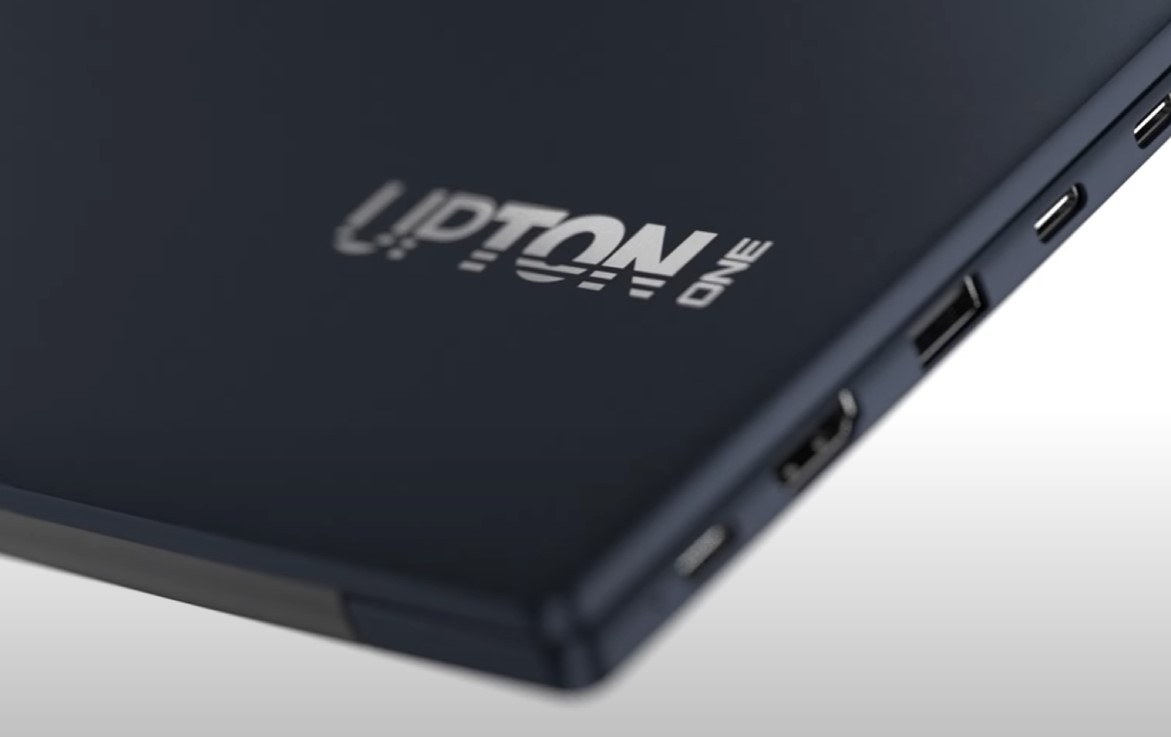
Six seconds in and we see the laptop open, revealing an LCD display, highly likely to be around 14 inches in diameter. Just above the screen is a cut-out. Typically where a webcam would be, could there be a Raspberry Pi Camera Module v3 in there, or is it just a typical USB webcam? It also looks like there are microphones in the screen bezel.
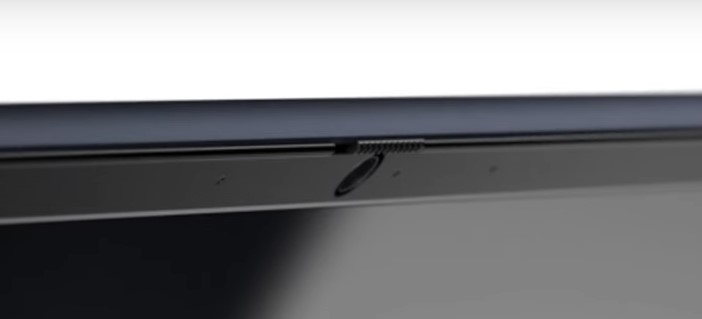
Nine seconds, and we are on the right side of the keyboard, and going from left to right we can see an AV jack for audio and composite video output (I guess). Then we have a micro SD card slot, useful if you are using a CM5 without any eMMC or have chosen not to use NVMe storage. Two USB ports are present. They have dark-colored inserts, which could mean USB 2.0, but we hope that they are USB 3.0. Rounding off this side of the laptop is a Kensington lock point.
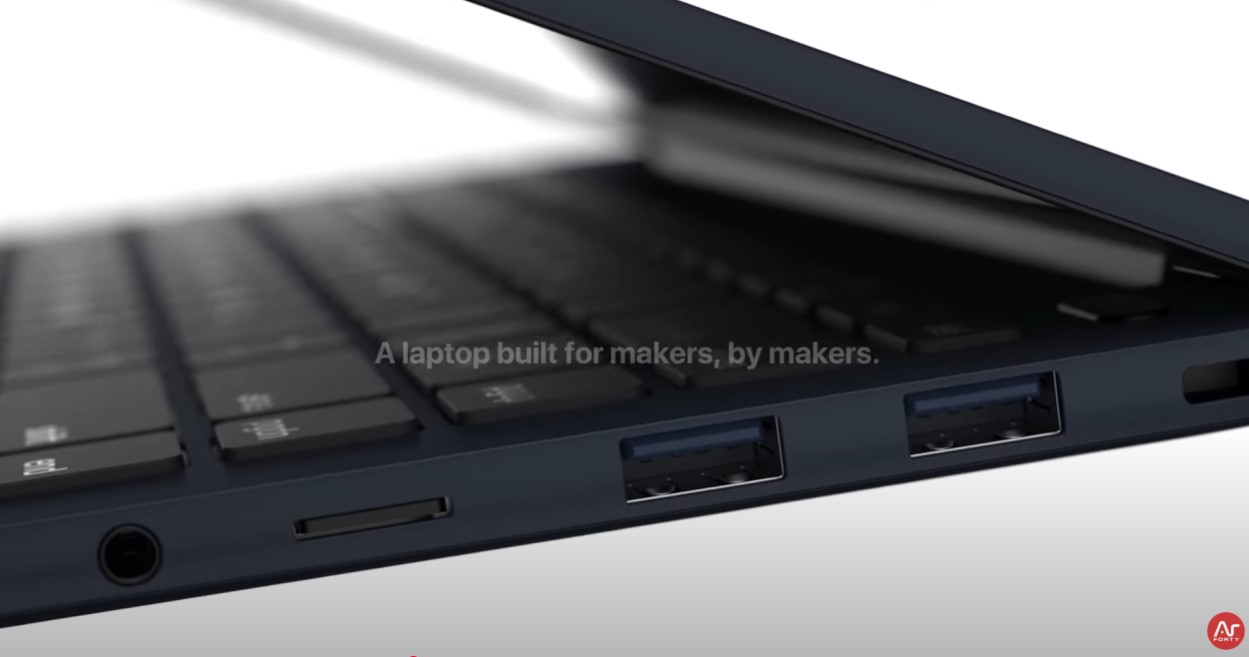
Now we get to the CM5 itself. Which is on the underside of the laptop with a long aluminum "heatpipe" that wicks away heat to the underside of the device. Looking at the CM5's position and the M.2 NVMe slot position on the PCB (the screw points are visible in the video), it seems that the NVMe storage also makes contact with the aluminum. We can't see any form of active cooling in the video, but there is what appears to be a fan intake next to the CM5, so there could be some active cooling. After all, the CM5 and Raspberry Pi 5 both run hot.
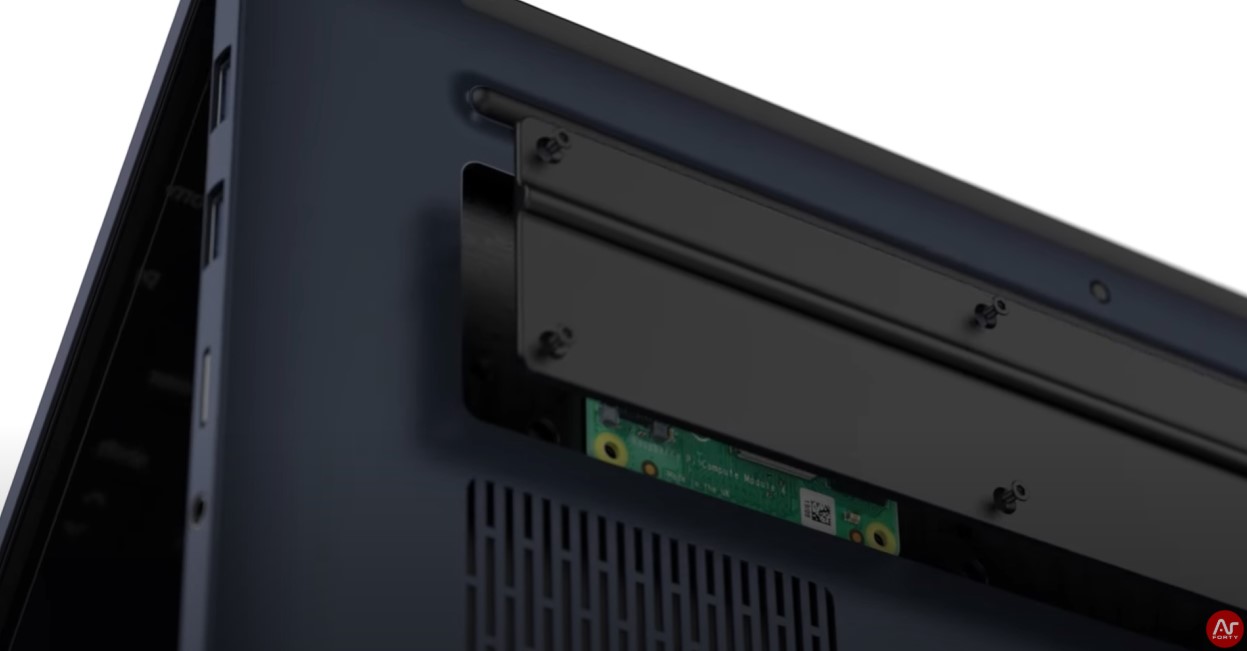
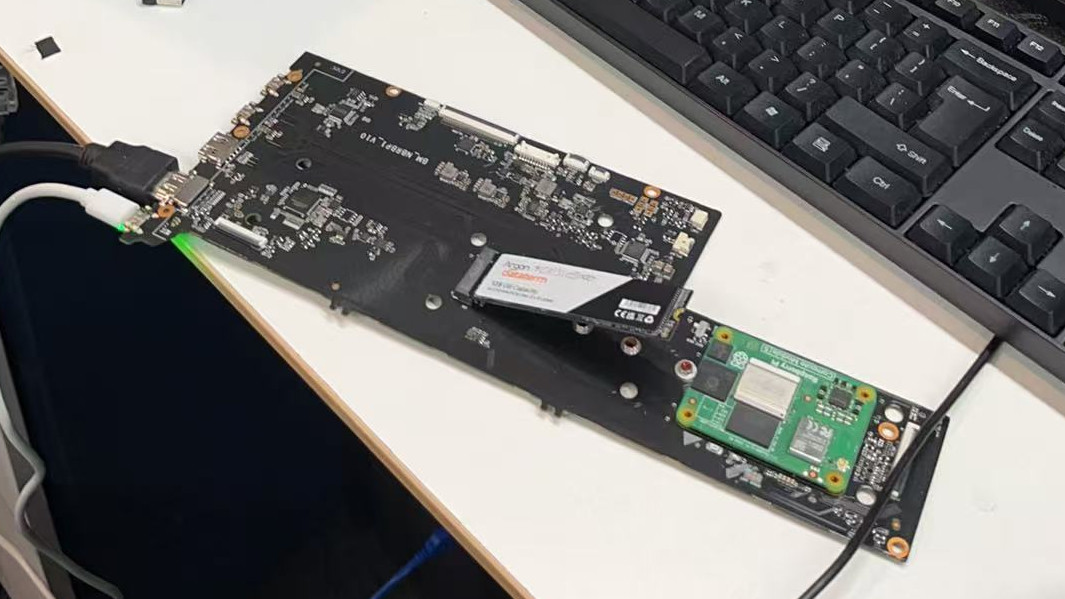
The keyboard looks like the usual laptop chiclet style keys, but the Windows key (sometimes called the Super key) has the Raspberry Pi logo printed upon it. Under the space bar is a large trackpad with no visible buttons.
The video doesn't tell us anything about the Upton One's power requirements. It'll likely use USB-C PD for power, charging a built-in battery via a controller and supplying power to the CM5, screen and other peripherals.
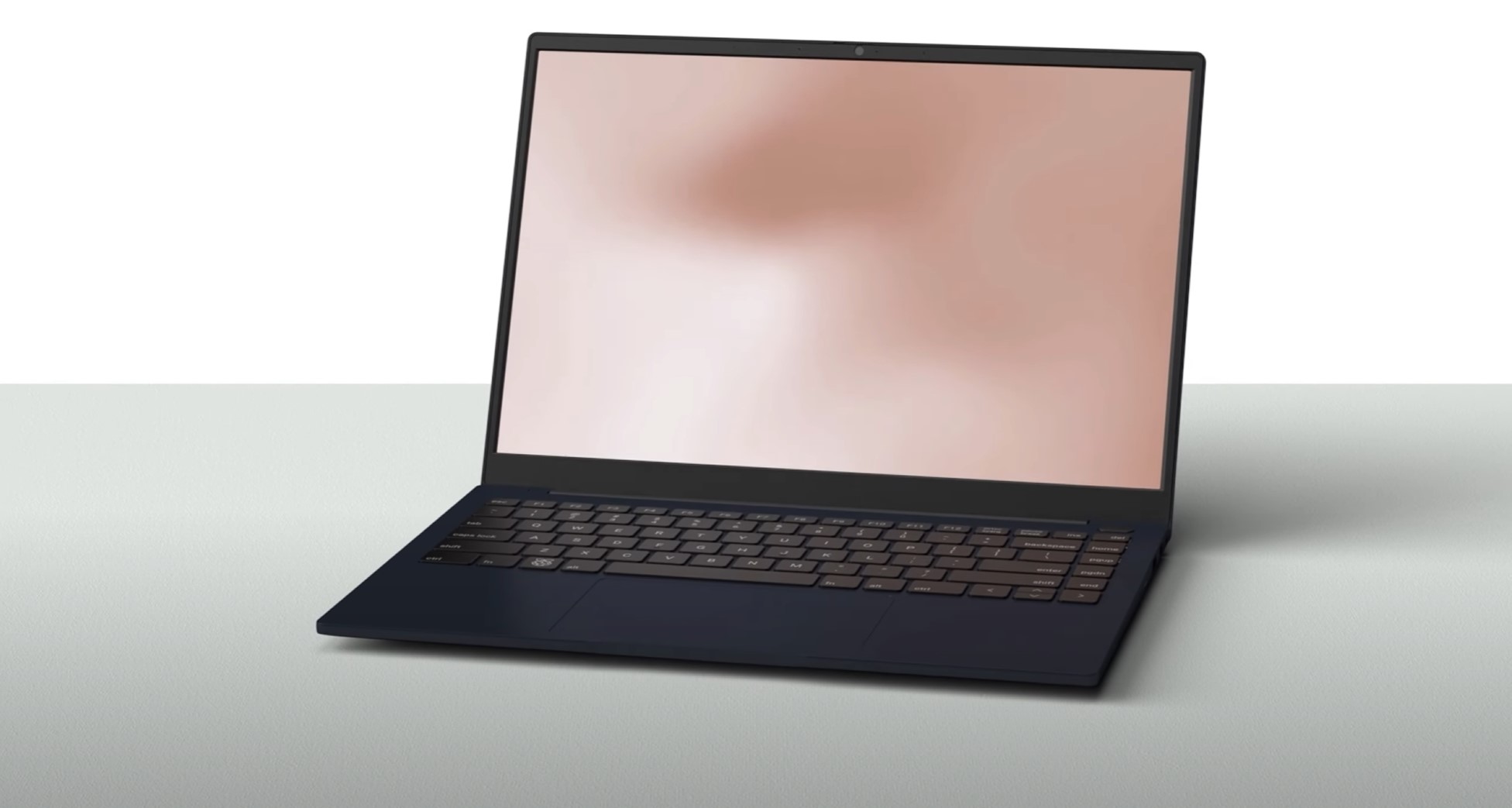
When will it arrive, how much will it cost? Those details are still to be announced but we will make every effort to secure a unit for a full review.

Les Pounder is an associate editor at Tom's Hardware. He is a creative technologist and for seven years has created projects to educate and inspire minds both young and old. He has worked with the Raspberry Pi Foundation to write and deliver their teacher training program "Picademy".
-
Pierce2623 So even Radpberry Pi nerds are cult of celebrity groupies these days? That’s crazy, especially considering Raspberry Pi heavily favored business orders over the “democratization of computing” when the plague crunch hit.Reply -
usertests Two USB-C ports taken out to add GPIO? Yikes.Reply
Raspberry Pi laptops have never made sense, unless you can steal it off the truck. -
abufrejoval I can't agree that putting a Raspberry PI compute module in a laptop chassis "is a good idea", beause they are terribly inefficient.Reply
You know that, most people know that, and quite a few RP enthusiasts will never care.
But there is always someone new, who doesn't. And who could be mislead into thinking that this might actually be good alternative to a laptop designed for mobile use.
So please add a bit of a caveat for the naive fist comers. -
abufrejoval Reply
Put yourself in Upton's shoes and try to seriously argue both cases: let us know what you come up with.Pierce2623 said:So even Radpberry Pi nerds are cult of celebrity groupies these days? That’s crazy, especially considering Raspberry Pi heavily favored business orders over the “democratization of computing” when the plague crunch hit.
It was never an easy decision to make, a true choice between pest and cholera and I doubt that anyone in his place would ever feel good about any path taken. -
Pierce2623 Reply
I agree that he had to make a super difficult decision. I just know I would’ve swung the opposite direction if I’d built my company on “democratizing computing”. Just has to say “We’re sorry if some companies built their business model around our products but I’m not screwing my core audience to support businesses.”.abufrejoval said:Put yourself in Upton's shoes and try to seriously argue both cases: let us know what you come up with.
It was never an easy decision to make, a true choice between pest and cholera and I doubt that anyone in his place would ever feel good about any path taken. -
abufrejoval Reply
And he might argue that democratizing computing isn't about giving everyone the chance to use PIs as toys, but enabling the poor to compete with the rich with technology.Pierce2623 said:I agree that he had to make a super difficult decision. I just know I would’ve swung the opposite direction if I’d built my company on “democratizing computing”. Just has to say “We’re sorry if some companies built their business model around our products but I’m not screwing my core audience to support businesses.”.
Ultimately business is about giving people a livelihood and that is what he's trying to enable.
Your indignation might actually be more warranted if he'd privileged the rich, e.g. those who buy PIs as toys to water their potted plant at home instead the business which uses it to controlling the watering the fields in a poor country.
And the first he has to care about are the people he employs: will they do better if businesses adopt PIs, too? Using the knowledge and skills people learned from their PIs at school? Democratising is about spreading everywhere.
I understand your frustration, but I believe your perspective on his decisions is a little too close to your navel.
I know that there is tons I'd like them to do differently. But then I think about why my wishes may not be aligned with their vision... and choose another toy to play with. -
Pierce2623 Reply
He did favor the rich over the poor. Tons of small companies didn’t get what they needed while the bigger companies always got most of what they wanted. He absolutely favored his network of buddies over small mom and pop businesses. It’s not really a big deal to me. The projects I use them for can run on most any modern board with Linux and GPIO. I just think the dude is full of sh!t. I was also disappointed that their new board didn’t surpass an Orange Pi for power or add nvme support to the base board without having to use an extra board. When my GF wanted a “miniature PS2 with just a few games” for her bedroom TV, I had zero issues selecting an Orange Pi over a Raspberry Pi. In fact, I put Android on it and she can actually use it.abufrejoval said:And he might argue that democratizing computing isn't about giving everyone the chance to use PIs as toys, but enabling the poor to compete with the rich with technology.
Ultimately business is about giving people a livelihood and that is what he's trying to enable.
Your indignation might actually be more warranted if he'd privileged the rich, e.g. those who buy PIs as toys to water their potted plant at home instead the business which uses it to controlling the watering the fields in a poor country.
And the first he has to care about are the people he employs: will they do better if businesses adopt PIs, too? Using the knowledge and skills people learned from their PIs at school? Democratising is about spreading everywhere.
I understand your frustration, but I believe your perspective on his decisions is a little too close to your navel.
I know that there is tons I'd like them to do differently. But then I think about why my wishes may not be aligned with their vision... and choose another toy to play with.
